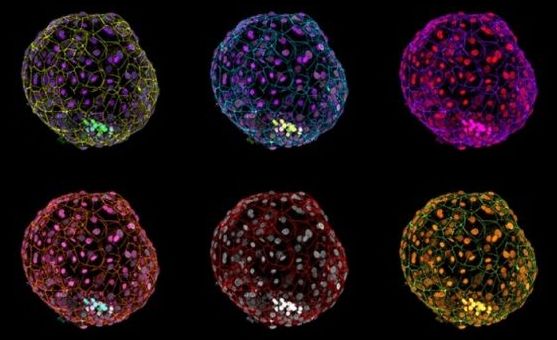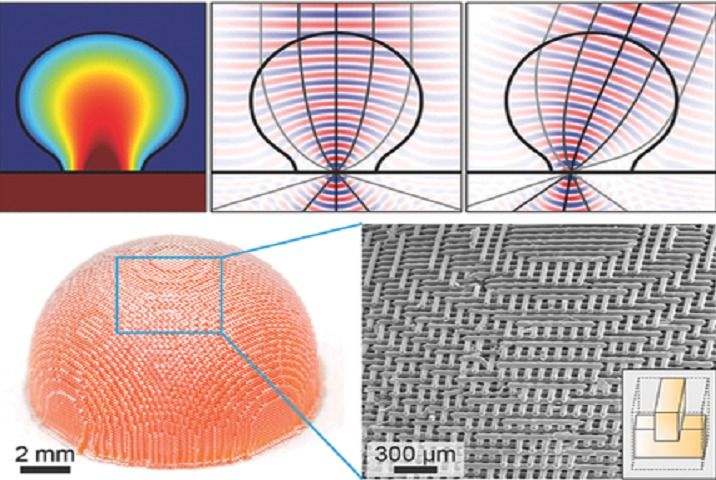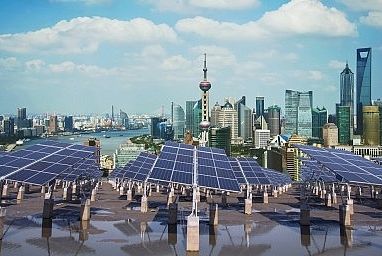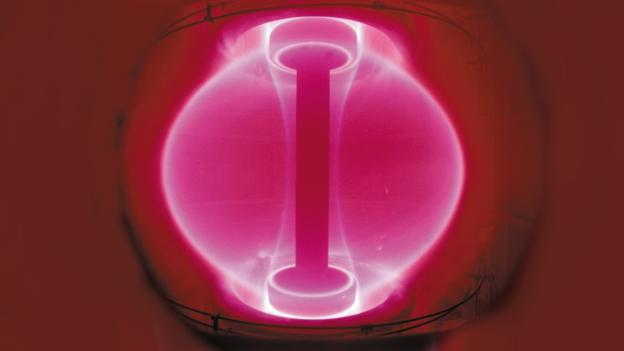Archive for the ‘energy’ category: Page 338
May 5, 2016
Humans Are Fatter Than Primates, But It Fuels Our Bigger Brains
Posted by Karen Hurst in categories: energy, food, neuroscience
Left hemisphere of J. Piłsudski’s brain, lateral view.
A new study has found that a faster metabolism is the main reason that humans were able to evolve bigger brains than other closely related apes. Humans burned 635 more calories per day than gorillas, and a whopping 820 more calories per day than the orangutans in the study.
Although the study findings seem promising, more research on the issue is required since the research was performed only on adults.
Continue reading “Humans Are Fatter Than Primates, But It Fuels Our Bigger Brains” »
May 5, 2016
Artificial Wombs Just Got One Step Closer to Reality
Posted by Shailesh Prasad in categories: biological, energy
Scientists have sustained human embryos in a petri dish for 13 days, shattering the previous record of nine days. The breakthrough will allow researchers to study early fetal development in unprecedented detail, and brings us one step closer to viable “artificial wombs.” But it’s adding fuel to an already heated ethical debate.
Two separate papers published this week, one in Nature and one in Nature Cell Biology, have reported culturing human embryos for nearly two weeks, going well beyond previous efforts. There’s no reason to believe that the embryos couldn’t have survived beyond the two-week mark, but the experiment had to be halted to adhere to the internationally agreed 14-day limit on human embryo research.
http://io9.gizmodo.com/how-to-build-an-artificial-womb-476464703
Continue reading “Artificial Wombs Just Got One Step Closer to Reality” »
May 3, 2016
Comcast Can Now Sell You Fiber Speeds Over Coax, Thanks to a New Modem
Posted by Dan Kummer in categories: energy, habitats, internet
Gearing up to offer one-gigabit-per-second Internet service in five U.S. cities this year. The first five cities to see the blazing speed are Nashville, Atlanta, Chicago, Detroit, and Miami.
Comcast, the Internet provider everyone loves to hate, is gearing up to offer one-gigabit-per-second Internet service in five U.S. cities this year. The first five cities to see the blazing speed are Nashville, Atlanta, Chicago, Detroit, and Miami. In line with Google Fiber, Verizon FiOs, and municipal offerings at one-gigabit speeds to the home, the new Comcast service will dramatically increase download speeds. Most subscribers currently receive download speeds of 25–100 megabits per second. For the customers with a 100Mbps connection, the increase boosts their speed 10 times over. For customers with 25 megabit connections, it’s 40 times faster. At that rate, one could download a full-length HD movie in around seven seconds. Not bad.
What sets Comcast’s gigabit service apart is the fact that the Internet provider is not using fiber optic lines to achieve the mega-fast speeds. Instead the company is using the existing coaxial cable lines that are already piped into people’s homes, giving Comcast a potentially huge advantage over a project like Google Fiber—which requires digging costly trenches through cities to lay fiber cables.
Continue reading “Comcast Can Now Sell You Fiber Speeds Over Coax, Thanks to a New Modem” »
May 2, 2016
Northwestern University Research Group Uses 3D Printing to Create Terahertz Lens
Posted by Karen Hurst in categories: 3D printing, 4D printing, energy, nanotechnology
The Illinois-based Northwestern University has utilized 3D printing technology to research a variety of vital applications, from 3D printing fuel cells to 4D printing materials on the nanoscale. Now, researchers from the prestigious institution are looking at 3D printing technology through a unique lens—a terahertz lens, to be exact. Generally unknown within the electromagnetic spectrum, hidden in between the more commonly known wavelengths of microwaves and infrared, lies the information-packed terahertz spectrum. The terahertz is not only a forgotten frequency, it’s also rarely studied, let alone well understood, yet it has high value in applications regarding imaging and communications.
One research group, led by Northwestern University’s Cheng Sun, has used metamaterials and a unique style of SLA technology called projection micro-stereolithography to manufacture a novel lens capable of working with terahertz frequencies. The 3D printed terahertz gradient-refractive index lens has better imaging capabilities than other commonly used lenses, and also enables researchers to make more advances with the relatively unknown world of the terahertz.

Click on photo to start video.
This invention has the potential to provide clean water, electricity, and internet access to millions of people in need.
Apr 28, 2016
China Quest for Clean Tech
Posted by Karen Hurst in categories: economics, energy, sustainability
Nice
Mark L. Clifford on China, renewable energy, and economic growth.
By young china watchers for the diplomat.
Apr 28, 2016
Blockchain Smart Contracts: A Hyper-Deflationary Force for Health Care Delivery
Posted by Karen Hurst in categories: bitcoin, electronics, energy, health
Blockchaining coming to healthcare digital services.
Blockchain and digital health services could be a perfect match for each other across a variety of applications. From distributed interoperable health records to proof of adherence for medication, the healthcare industry is ripe for digital innovation. More generally, technology is a hyper-deflationary force, and this could be particularly effective in delivering quality health care through more effective channels such as mobile apps.
Investments in the digital health space have increased significantly in the past two years. This is largely possible because of improved low-power sensors and user-friendly cloud platforms that interface with those hardware devices. The Rock Health Funding Database shows a $4.5 billion increase in venture funding in digital health from 2014 to 2015.
Continue reading “Blockchain Smart Contracts: A Hyper-Deflationary Force for Health Care Delivery” »
Apr 28, 2016
The secretive, billionaire-backed plans to harness fusion
Posted by Aleksandar Vukovic in categories: energy, government
Unencumbered by red tape, these venture-backed companies believe that they can find a faster, cheaper way to fusion than government-sponsored projects, and some very influential people agree: besides Bezos, Microsoft cofounder Paul Allen and PayPal cofounder Peter Thiel are also backing firms at the forefront of fusion development.
The founders of Amazon and Microsoft are putting their fortunes into little-known fusion energy companies. Jonathan Frochtzwajg digs into a story that has strange parallels with fiction.
Apr 27, 2016
If You Care About the Earth, Vote for the Least Religious Presidential Candidate
Posted by Zoltan Istvan in categories: energy, existential risks, genetics, geopolitics, policy, transportation
My new Vice Motherboard article on environmentalism and why going green isn’t enough. Only radical technology can restore the world to a pristine condition—and that requires politicians not afraid of the future:
I’m worried that conservatives like Cruz will try to stop new technologies that will change our battle in combating a degrading Earth
But there are people who can save the endangered species on the planet. And they will soon dramatically change the nature of animal protection. Those people may have little to do with wildlife, but their genetics work holds the answer to stable animal population levels in the wild. In as little as five years, we may begin stocking endangered wildlife in places where poachers have hunted animals to extinction. We’ll do this like we stock trout streams in America. Why spend resources in a losing battle to save endangered wildlife from being poached when you can spend the same amount to boost animal population levels ten-fold? Maye even 100-fold. This type of thinking is especially important in our oceans, which we’ve bloody well fished to near death.

















